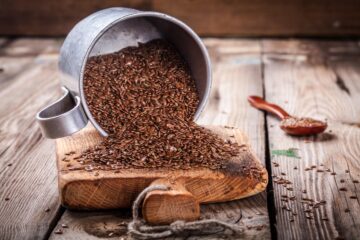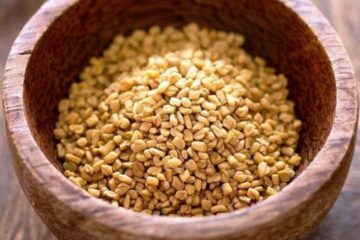Name:
Description:
Chamomile is a dainty plant that typically grows to about a foot high. The plant boasts delicate white flowers with a bright yellow center, resembling a small daisy. Its leaves are feathery and finely divided. The flowers have a mild, fragrant aroma that is often associated with apples.
Medicinal Uses of Chamomile:
- Anxiety and Sleep Disorders: Chamomile has long been used as a natural remedy for anxiety and sleep disorders. In a study published by the National Institute of Health (NIH), it was found that chamomile extract has the potential to treat generalized anxiety disorder. The study’s participants who took chamomile extracts had a statistically significant reduction in anxiety compared to those who took a placebo. You can access the study at https://www.ncbi.nlm.nih.gov/pmc/articles/PMC3600416/
- Digestive Health: Chamomile has been used traditionally to treat a variety of digestive ailments, including indigestion, nausea, vomiting, loss of appetite, and intestinal gas due to its anti-inflammatory and antispasmodic properties. A research article published by the NIH suggests chamomile could help in managing gastrointestinal conditions, although more extensive clinical studies are needed for definitive conclusions. You can read more about this research at https://www.ncbi.nlm.nih.gov/pmc/articles/PMC2995283/
- Skin Conditions: Chamomile’s anti-inflammatory properties can potentially help soothe skin irritations such as eczema and wounds. A review by the American Chemical Society revealed chamomile’s bioactive phytochemicals could potentially contribute to its medicinal uses, including its anti-inflammatory, antiseptic, and skin healing effects. This information can be found at https://pubs.acs.org/doi/abs/10.1021/bk-2012-1098.ch001
- Cardiovascular Health: Flavonoids present in chamomile have been studied for their potential effects on heart health. According to a study shared by the NIH, dietary intake of flavonoids may reduce the risk of mortality from heart disease in elderly men. However, direct links between chamomile consumption and improved cardiovascular health have not been firmly established. The flavonoids study can be accessed at https://www.ncbi.nlm.nih.gov/pmc/articles/PMC4943945/
- Cancer: Some laboratory studies suggest that chamomile has potential anti-cancer properties. However, these studies are still preliminary, and the potential application of chamomile in cancer treatment or prevention in humans needs further investigation. One such study can be found at the NIH site: https://www.ncbi.nlm.nih.gov/pmc/articles/PMC5052429/
- Diabetes Management: Preliminary studies suggest that chamomile tea might help regulate blood sugar levels. A study conducted on rats and published in the Journal of Endocrinological Investigation (https://link.springer.com/article/10.1007/s40618-015-0314-0) indicated that chamomile tea had some beneficial effects on blood sugar regulation. However, more research is needed in this area, particularly involving human subjects.
- Hemorrhoids: Topical applications of chamomile have been used in the treatment of hemorrhoids due to its anti-inflammatory properties. A study found that a chamomile ointment showed potential effectiveness for hemorrhoid treatment. The research, however, was conducted on a small sample, and thus, larger studies are needed for definitive conclusions (source: National Library of Medicine, https://pubmed.ncbi.nlm.nih.gov/27213892/).
- Menstrual Pain: Chamomile tea has been used traditionally to relieve menstrual cramps. Its antispasmodic and anti-inflammatory properties might help to relax the uterus and decrease the production of prostaglandins, thus reducing period pain. A study conducted on the effect of chamomile tea on menstrual pain found that consuming chamomile tea for a month could reduce the pain of menstrual cramps. The study can be accessed here: https://pubmed.ncbi.nlm.nih.gov/26442930/.
- Respiratory Health: As an herbal remedy, chamomile has been used to soothe symptoms related to common colds and other respiratory ailments. Inhalation of chamomile steam is often recommended for relieving symptoms of upper respiratory tract infections, and for soothing sore throats. However, there is limited scientific evidence to substantiate these traditional uses.
- Eye Health: Used as an eyewash, chamomile tea is believed to relieve eye infections and conjunctivitis. Please note, this is a traditional use and scientific evidence is limited, so one should consult with a healthcare provider before trying this.
Origin and Distribution:
Chamomile is native to Western Europe and Northern Africa but is now grown worldwide. Both German and Roman Chamomile are found and cultivated globally, but German Chamomile is more widespread.
Cultivation and Care:
Chamomile grows best in full sun to partial shade and prefers well-drained, sandy soil. It can tolerate poor soil conditions but prefers a neutral to slightly acidic pH. Chamomile is drought-tolerant once established and requires moderate watering.
Harvesting and Storage:
Chamomile flowers are usually harvested in the summer, typically in the morning after the dew has evaporated. The flowers are then dried and can be stored in airtight containers for later use.
Uses:
Culinary Uses: Chamomile is commonly used in teas for its soothing, slightly sweet flavor. It can also be used in desserts, salads, and some types of liquor.
Medicinal Uses: Chamomile has been traditionally used in herbal medicine for its calming effects, to aid sleep, and to help with digestive problems. The National Center for Complementary and Integrative Health (https://www.nccih.nih.gov/health/Chamomile) suggests that chamomile may have modest benefits for generalized anxiety disorder, and it’s commonly used for gastrointestinal conditions.
Other Uses: Chamomile is used in cosmetics due to its soothing properties. It’s also often included in hair products for its purported ability to lighten hair.
Safety Information:
While chamomile is generally safe for most people, it can cause allergic reactions in those allergic to plants in the same family, such as ragweed, chrysanthemums, marigolds, or daisies (source: Mayo Clinic, https://www.mayoclinic.org/drugs-supplements-chamomile/art-20363233).
Historical and Cultural Significance:
Conservation Status:
As of now, chamomile is not listed as endangered or at risk by any major conservation organization.




